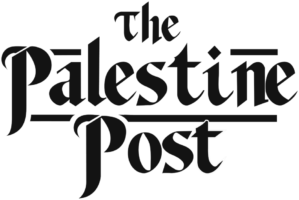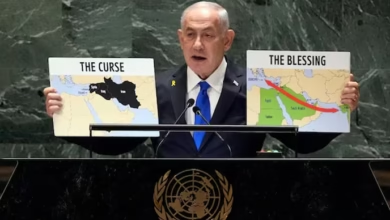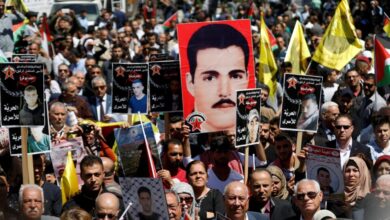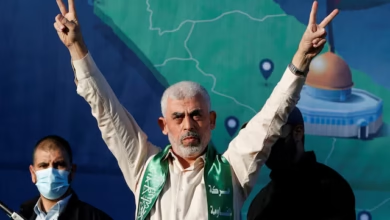Hasbara: Israel’s Propaganda Machine
Israel’s global media campaign to control the Palestinian narrative
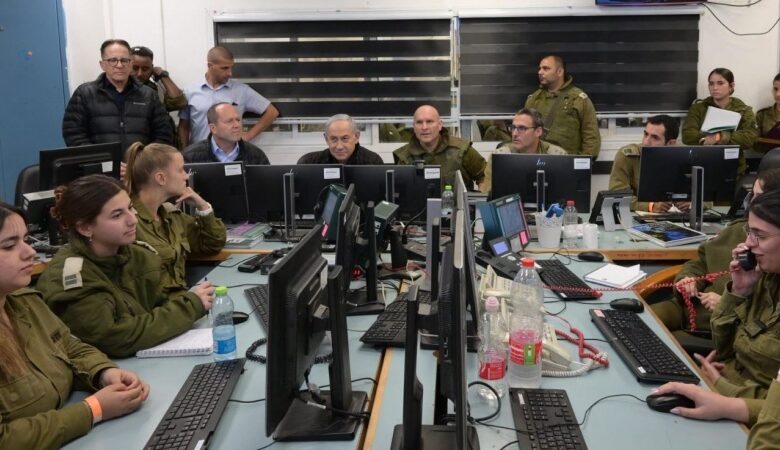
Hasbara is a term that many people may not know, but it is a key part of Israel’s global strategy to improve its public image and control international views to fit its needs. It influences the minds of those who do not have a strong background on the facts related to the Palestinian issue. Israel commits mass killings and violations of human rights and international laws, then creates a false reality that it shares on social media and television. This is done to show the world that it has to take these actions to defend its land, which they claim is “a land without a people for a people without a land.”
This strategy is not just about managing websites or spreading controlled news; there is an official government office for Hasbara located in the Israeli Prime Minister’s office. Therefore, it is important to understand what Hasbara is, along with its policies and goal
The Definition
“Hasbara” is a Hebrew word meaning “explanation” or “interpretation,” and is often considered synonymous with “propaganda.” The term refers to Israel’s efforts to present its narrative in a favorable light, justifying the need for a state called Israel. Hasbara focuses on projecting Israel’s stance on its right to seize Palestinian land and displace its original inhabitants, while presenting a positive image to the world and the international community.
When faced with criticism, Israel relies on fabricated evidence, half-truths, and misleading campaigns to influence perception. Hasbara employs structured methods, strategies, and tools to sway public opinion, often called “public diplomacy,” linking information warfare to strategic objectives to promote Israel’s image globally and suppress opposition through a coordinated network of officers, academics, intelligence, and journalists.
Hasbara goes beyond merely “explaining” or “clarifying” to become a form of “information warfare,” aimed at securing allies’ support through carefully crafted communication that shapes perceptions and behavior by manipulating how issues or events are viewed, using biased arguments and emotional appeals. With public opinion increasingly shaped by social media, Hasbara utilizes content to evoke empathy.
The term “Hasbara” was first introduced in 1912 by Nahum Sokolow, an early Zionist activist who later became a leader within the movement. Sokolow recognized the importance of media influence to secure international support for the Zionist project and devoted himself to promoting Zionist goals within European and Western circles, laying the groundwork for what would later become a cornerstone of Israeli propaganda strategy. Thus, the term predates the state of Israel and was developed over time to become a central component of its policy. Notably, Hasbara received further refinement under Israeli Prime Minister Golda Meir (1969-1974), who institutionalized and expanded its use to focus particularly on influencing international public opinion.
Officially, Hasbara entered the governmental framework in the 1970s, as Israel’s need for international support grew following the 1967 Naksa (or Six-Day War).
In this conflict, Israel engaged with Egypt, Syria, Jordan, and Iraq, with additional technical assistance from Lebanon, Algeria, Saudi Arabia, and Kuwait. After its victory, Israel expanded its territory by nearly three times what it had occupied in the 1948 War Al Nakba, resulting in significant human and material losses.
Since then, Israel has allocated official budgets specifically for Hasbara, funding media campaigns to improve its image worldwide. Israelis were fully aware of the need to launch a misinformation campaign alongside their planned military operations to mitigate negative reactions from Washington and other Western powers.
Hasbara and 1982
The year 1982 marked a pivotal point in the development of Hasbara, as Israel faced intense international criticism during its invasion of Lebanon and siege of Beirut, especially after the “Sabra and Shatila” massacre. This massacre, which occurred following Israel’s invasion of Lebanon, saw continuous shelling that led to extensive destruction and a high death toll, with approximately 1,300 people killed over 88 days of siege on Beirut and its camps under the supervision of the Israeli army.
Additionally, Israel violated the “Philip Habib Agreement”—the first official ceasefire agreement between the Palestinians and Israelis—further intensifying unprecedented international condemnation due to the invasion and related events. Israel’s image shifted to that of an aggressor, sparking global outrage, particularly in the West, placing Israel in a challenging position that demanded a strong media strategy to improve its reputation.
In response, Hasbara established permanent media structures in both the United States and Israel to influence global perspectives, particularly among Americans, regarding Israel and the Middle East. These structures emphasized several key points, including:
- The strategic importance of Israel to the United States
- Its noticeable material weakness.
- Shared cultural values with the West
- Its declared desire for peace
Goals and Strategies of Hasbara
Hasbara was not created without purpose; Israel developed it with specific goals in mind. The structured Hasbara system includes comprehensive training, including the “Hasbara Handbook”—a guide teaching students the basics and strategies of media defense, designed to shape global opinions and create a generation that opposes Palestine and firmly believes the land rightfully belongs to Israel. The Jewish Agency for Israel supports this guide online for students worldwide, helping them advocate for Israel and its policies. Additionally, “Hasbara Fellowships” were launched, recruiting and training both Israeli and non-Israeli volunteers, particularly college students, offering academic scholarships in American, Canadian, and European universities.
The primary goals of Hasbara include:
- Justifying the brutality and violence committed by the occupation.
- Fabricating events and reversing contexts to distort reality and manipulate public awareness.
- Defaming any entity that criticizes Israel, even through slogans and speeches, and framing any opposition to Israel as “anti-Semitic,” which carries legal consequences.
- Ensuring the appearance of posts and comments aligned with their objectives by organizing training in digital media and social networking techniques.
- Promoting the label “self-hating Jew” against Jews who oppose Israel’s actions.
- Concealing pro-Gaza posts without officially notifying users, especially after the events of October 7th.
- Enhancing Israel’s image, promoting its perspective, and justifying its policies while covering up its crimes in the eyes of the global public, while simultaneously discrediting the Palestinian resistance.
- Propagating the idea that Israel is an innocent victim under terrorist threat, making any criticism against it seem as if it justifies terrorism.
As mentioned before, Hasbara is more than just a term; it is an official government apparatus that includes government agencies, ministries, research centers, and non-governmental organizations. This system includes a department within the Prime Minister’s Office, the Media and Public Diplomacy section in the Ministry of Foreign Affairs, the Ministry of Public Diplomacy and Diaspora Affairs, the Jewish Agency for Israel (part of the World Zionist Organization), the Ministry of Tourism, and the spokesperson’s department of the Israeli military, each with specific, defined roles. The Israeli government funds the Hasbara project with substantial support from global individuals and companies. Each time Israel commits war crimes against Palestinians, Hasbara plays a crucial role in misleading international public opinion to avoid accountability.
Hasbara with social media
“Hasbara” is distinguished by its ability to adapt to modernity and technology, a fact that is evident from its historical journey starting in 1912 and extending to 2024. It has focused on leveraging the power of social media to its advantage, utilizing all electronic platforms such as Instagram, X (formerly Twitter), Facebook, and other social media outlets. It has restricted posts that discuss the situation in Gaza by categorizing them as sensitive content. This strict control extends even to internal matters, where there are significant restrictions on posting, liking, and commenting. If posts contradict Israeli policies, their authors may face legal consequences.
The IDF (Israel Defense Forces) has established electronic accounts across all social media platforms, showcasing their actions to protect the interests of the State of Israel, even at the cost of human lives, as they claim. Through these accounts, they aim to convince global public opinion that “Jews are the foundation of civilization in the land of Palestine and the rightful owners of it.” The effort to develop the Hasbara apparatus continues as long as the conflict persists and even after it ends.
However, we have recently witnessed the power of social media in conveying the true image of the occupation’s crimes. From the heart of Gaza, social media users have been broadcasting the massacres committed by the Israeli occupation since October 7, which has clarified the reality for many around the world regarding the genocide against the people of Gaza, the famine, and the deterioration of the healthcare sector. This situation has led to global protests, with demonstrators chanting in unison: “From the river to the sea, Palestine will be free.”
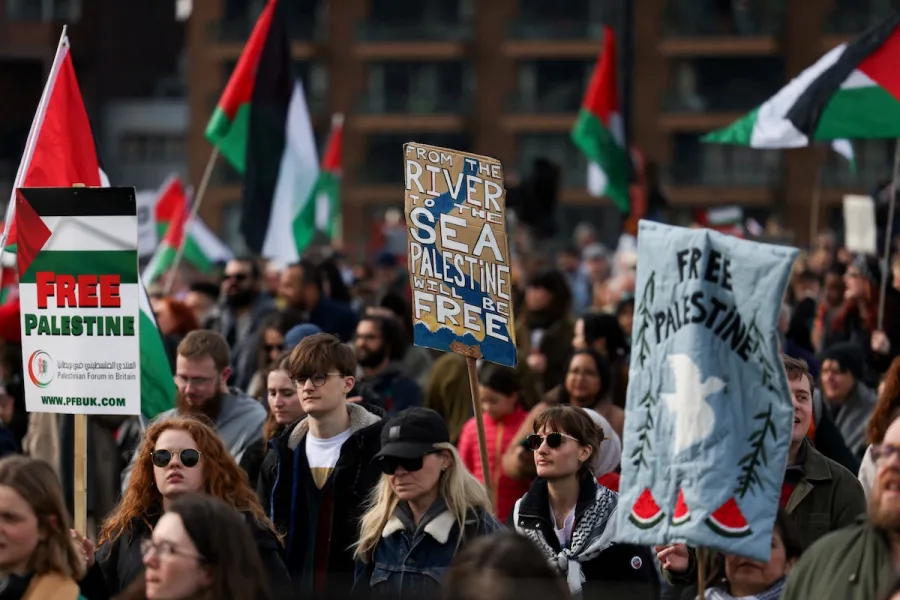
We all know that the Israeli occupation is fully aware that the narratives it presents to itself and the world are fabricated, and that the Jewish state in its current form is illegal and unjust. Nonetheless, Israel continues its ongoing ideological campaign to normalize what is unnatural in Palestine.
